Java moss, a beloved aquatic plant commonly found in aquariums, belongs to the Hypnaceae family. This versatile plant is especially favored by both novice and experienced aquarists for its remarkable ease of care and aesthetic appeal. Often regarded as a natural decor element, java moss thrives in a variety of conditions, making it an ideal choice for those looking to enhance their aquarium’s visual charm.
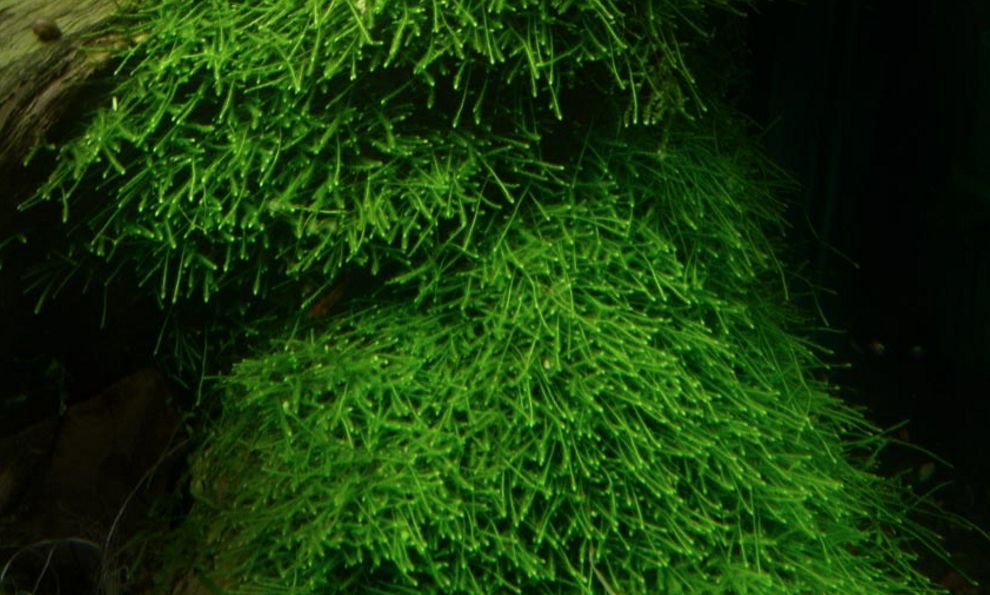
Contents
Habitat in the wild
Java moss is native to the waters of Southeast Asia, thriving in regions such as China, Thailand, Indonesia, and the Philippines. Most notably, it is associated with Java Island, which inspired its name. This aquatic moss species flourishes in freshwater environments, typically found in slow-moving or stagnant bodies of water, including streams, rivers, ponds, and even swamps. The variety of habitats allows java moss to adapt to different ecological conditions, showcasing its resilience.
In its natural habitat, java moss prefers shaded areas where light levels are low to moderate, often growing beneath tree canopies or alongside dense vegetation. It attaches itself to various substrates, including rocks, branches, tree roots, and fallen logs, creating a rich tapestry of life. This adaptability allows java moss to grow submerged in water or emersed when water levels drop, depending on environmental conditions. Its dense mats provide a soft and natural appearance, offering vital shelter and protection for numerous aquatic organisms, such as small fish, amphibians, and invertebrates.
Java moss plays a crucial role in maintaining ecosystem health by absorbing excess nutrients like nitrates and phosphates, which can otherwise lead to algal blooms. Its ability to filter water enhances overall water quality, providing a cleaner environment for the diverse range of life forms that inhabit these waters. The moss’s dense growth fosters a microhabitat for microorganisms, small invertebrates, and juvenile fish, which find nourishment and shelter within its lush foliage, thus promoting biodiversity.
Interestingly, java moss can spread along shorelines by utilizing the roots of inshore plants, which anchor it and provide stability. Given nearly 100% humidity, it can travel considerable distances, establishing new colonies and enhancing its ecological footprint. In the wild, it reproduces via spores, which can develop both underwater and on the surface, allowing it to thrive in various conditions. This reproductive strategy contributes to its resilience, ensuring that even if some patches are damaged, the species can continue to flourish.
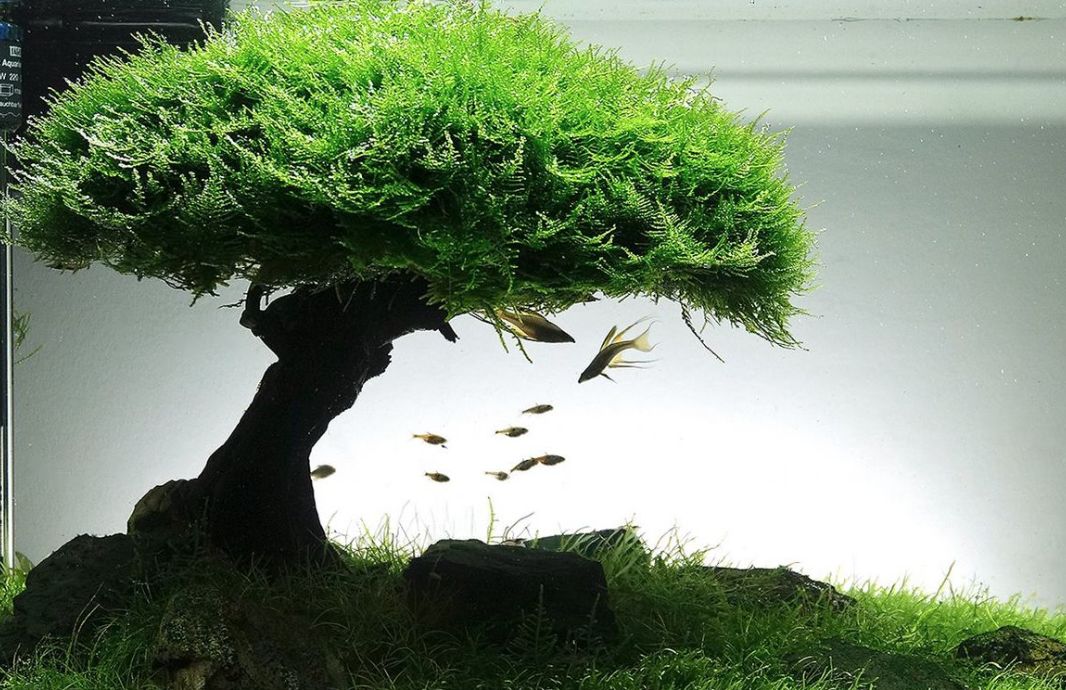
Description
Java moss features a soft stem that can reach approximately 17 cm in length, thickly covered with small, green leaves that measure up to 2 mm. These leaves are pointed and slightly toothed, showcasing a vibrant array of colors; older leaves tend to be darker, while younger ones display a bright, light green hue, adding to the visual appeal of this aquatic plant.
One of the remarkable aspects of java moss is its ability to cling to various objects and surfaces, thanks to its rhizoids. These extremely thin fibers, which consist of one or more protozoan cells, are microscopic in size and play a crucial role in the plant’s attachment and nutrient absorption. Through these rhizoids, java moss effectively absorbs the water and nutrients necessary for its growth, a characteristic it shares with many other types of mosses and lichens.
At first glance, it may seem that java moss grows in a chaotic manner. However, a closer inspection reveals a distinct three-level structure that enhances its aesthetic appeal and functionality in aquariums. The first level consists of tightly packed stems that cover the substrate, creating a lush foundation. The second level features horizontally growing stems, which form small arcs and give the entire bush a graceful, layered appearance. Finally, the third level showcases stems with leaves that grow vertically, contributing to the bush’s fluffy, textured look.
This unique growth pattern not only adds beauty to aquascapes but also provides essential habitats for various aquatic organisms. The layered structure of java moss offers hiding spots for fish and invertebrates, enhancing the biodiversity within the aquarium.
| Characteristic | Description |
|---|---|
| Scientific Name | Taxiphyllum barbieri |
| Common Name | Java Moss |
| Origin | Southeast Asia, specifically from Java Island |
| Growth Rate | Slow to moderate |
| Maximum Height | Around 2-4 inches (5-10 cm) |
| Light Requirements | Low to moderate light (0.5-2 watts per gallon) |
| Temperature Range | 59-86°F (15-30°C) |
| pH Range | 5.0-8.0 |
| Water Hardiness | Soft to moderately hard water |
| CO2 Requirement | Can thrive without CO2 injection, but benefits from supplementation |
| Propagation | Fragmentation, division, and cuttings |
| Ideal Placement | Attached to rocks, driftwood, or mesh for carpets or walls |
| Compatibility | Compatible with most fish, shrimp, and aquatic species |
| Care Level | Easy |
| Benefits | Provides hiding places for fry, absorbs excess nutrients |
| Challenges | Prone to accumulation of debris, may require occasional cleaning |
Difficulties in keeping
Java moss is an exceptionally fuss-free aquatic plant that makes it an ideal choice for both novice and experienced aquarists. It is undemanding in terms of lighting and water parameters, thriving in a variety of conditions. One of its remarkable features is that it can grow without a substrate, attaching itself to snags, stones, and other surfaces, providing versatility in aquascaping designs.
Despite its many advantages, java moss has one drawback: its slow growth rate. If you expect a patch of java moss to double in size within a month, you may be in for an unpleasant surprise. While it may grow at a sluggish pace, the moss consistently maintains its growth and almost never stops, adapting to changing tank conditions.
Java moss is generally considered a slow to moderate grower. Under optimal conditions, it can achieve a growth rate of approximately 0.5 to 1 inch (1.2 to 2.5 cm) per month. However, these rates can vary significantly between tanks due to factors such as light availability, nutrient levels, and water quality. To ensure robust growth, it is beneficial to provide adequate lighting, moderate water flow, and a nutrient-rich environment.
Understanding the growth patterns of java moss can help aquarists set realistic expectations for their aquascapes.
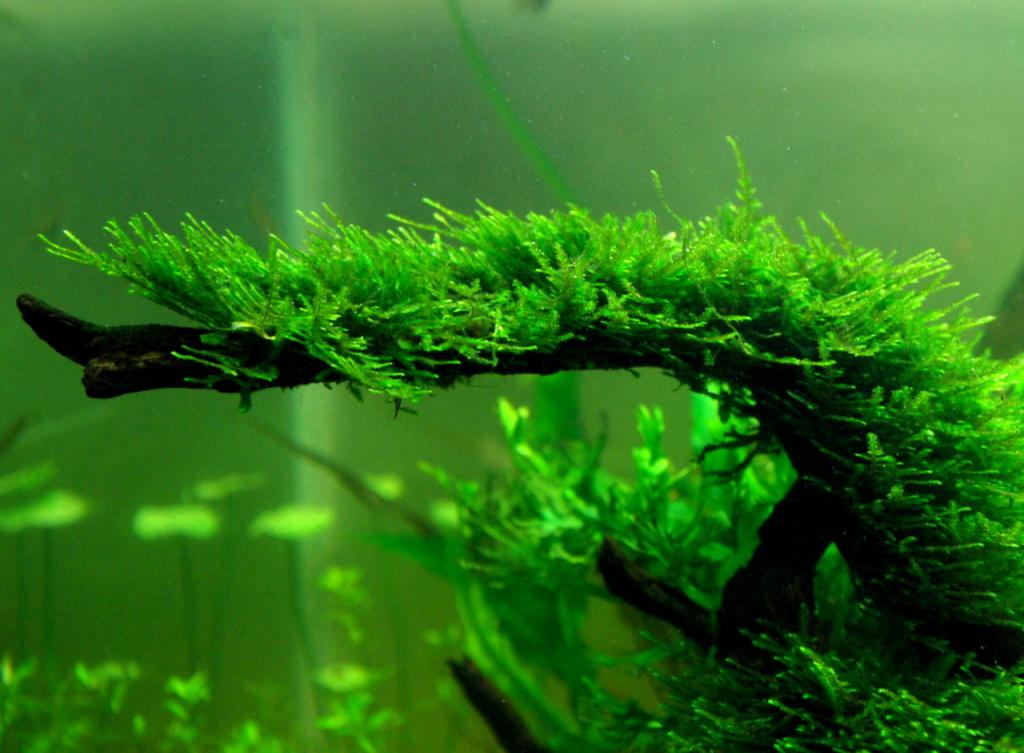
Keeping in a tank
Java moss has been a beloved choice among aquarists for many years, thanks to its aesthetic appeal and versatility in tank decoration. When used creatively, java moss enhances the natural look of the aquarium, especially when placed on snags, large stones, or pieces of flowerpots. For an attractive backdrop, consider affixing java moss behind a large-meshed net on the back wall of the tank. This technique can also be applied to decorate the bottom of the tank, creating a lush, green carpet effect.
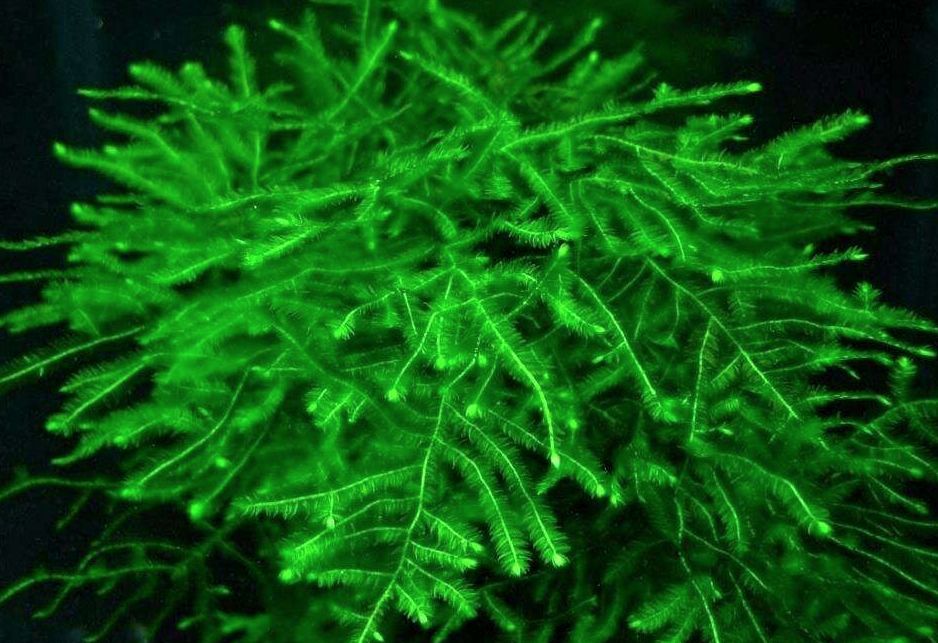
Lighting
Java moss is a versatile aquatic plant that can tolerate a wide range of lighting conditions, making it an ideal choice for various aquarium setups. Unlike some other plants that require intense lighting to thrive, java moss flourishes under standard fluorescent or LED aquarium lights, making it accessible for aquarists of all skill levels.
In its natural habitat, java moss is often found in shaded areas, typically growing beneath overhanging vegetation or in the dimly lit sections of streams and rivers. This preference for lower light conditions means that it can adapt well to aquarium environments that may not receive direct or strong lighting.
For aquarists looking to cultivate java moss, incorporating low to moderate light levels can lead to healthy growth and a vibrant appearance.
Water parameters
Java moss is an incredibly adaptable aquatic plant that can tolerate a wide range of water conditions, making it a popular choice for aquarists. It thrives within a temperature range of 59°F (15°C) to 86°F (30°C), allowing it to adjust to the various water temperatures commonly found in tropical aquariums. For optimal growth, java moss shows the best results at temperatures between 70°F and 75°F (21°C to 24°C). Additionally, it can also be cultivated in environments with high humidity levels, even outside of water.
When it comes to pH levels, java moss is equally adaptable, thriving in a broad range from 5.0 to 8.0. While it can adjust to slightly acidic or slightly alkaline water conditions, a pH around neutral (approximately 7.0) is generally considered ideal for its growth and health.
Java moss also demonstrates flexibility regarding water hardness, successfully thriving in both soft and moderately hard water conditions. Although it can tolerate varying degrees of hardness, moderate hardness is often preferred for optimal growth and vitality.
Nutrients
Java moss is not particularly demanding when it comes to nutrient levels in the water, making it an excellent choice for aquarists who may not want to invest heavily in specialized fertilization. It can thrive even in low-nutrient conditions, demonstrating impressive resilience. However, providing a balanced nutrient environment significantly enhances its health and growth potential.
CO2
Java moss is a low-demanding aquatic plant that thrives well without the addition of CO2 (carbon dioxide) supplementation in aquarium environments. It can obtain the necessary carbon from the surrounding water and the naturally occurring carbon dioxide present in the tank. This adaptability makes it a suitable choice for “low-tech” aquariums, where CO2 injection systems are not utilized.
Java moss has developed efficient carbon uptake mechanisms, allowing it to thrive even in conditions with low levels of available carbon dioxide. This capability enables the plant to carry out photosynthesis and maintain growth in aquariums where CO2 concentrations are relatively low compared to high-tech planted tanks.
For aquarists who prefer low-maintenance setups or are just starting their aquatic journey, incorporating java moss can provide a lush, green addition to the tank without the complexity of CO2 management. This resilience not only simplifies care but also enhances the overall aesthetic of the aquarium while contributing positively to the aquatic ecosystem.
Nutrients
Java moss doesn’t require any soil dressing mainly because it doesn’t have any root system. This moss gets all micro- and macro fertilizers from water. You can use some liquid fertilizers as extra nutrition for moss. Java moss isn’t demanding in terms of illumination, but excessive light can cause algae growth and it’ll be quite difficult to get rid of it later.
Filtration
An important issue when cultivating Java moss is water purity and proper filtration. Dirty water with mud and suspended matter in it brings long and painful death for the plant.
Don’t let food leftovers, fish metabolic byproducts and other rubbish lay and accumulate on the moss, because the plant pores get clogged and the Java moss won’t be able to breathe. To make sure that the moss looks healthy it’s better to keep cherry shrimps in a tank.
For cherry shrimps a bunch of Java moss is the best place to live. They breed there and their juveniles can hide there from fishes and other tank dwellers. At the same time, for Java moss these shrimps are the best neighbors, because they constantly clean it from dirt and food leftovers.
Green thread algae may appear in bunches in tanks with excessive illumination and it will be quite challenging to get rid of it in this case. This is when Amano shrimps become rather helpful, since they’ll eagerly eat green thread algae.
Java moss easily stands water parameters change. So, it can be used as a spawning substrate for most of fishes. This kind of moss also acidifies water (which is important for Characidae fish), cleans water and absorbs lots of substances dissolved in it (even methylene blue), dirt also settles on the moss.
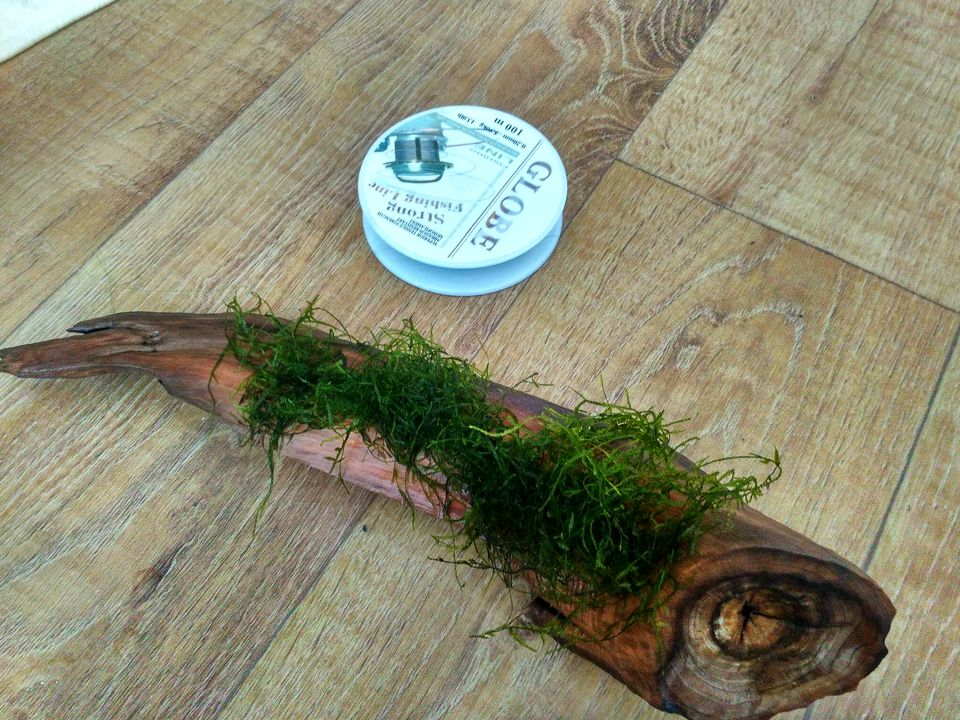
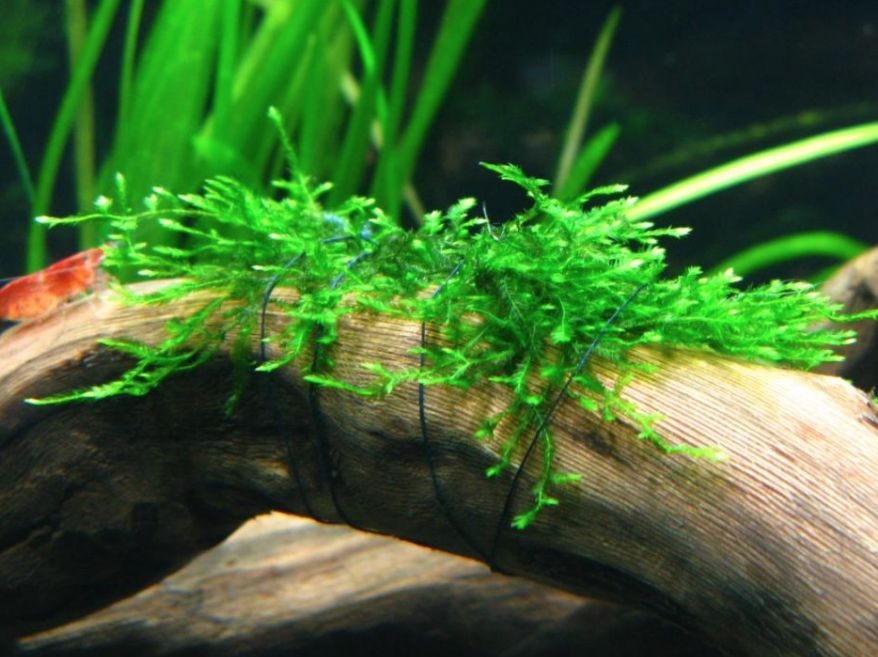
How to plant Java moss
The main principle of planting java moss is quite simple: securely attach the bunch to a surface, and over time, it will adhere on its own. There are several effective methods to achieve this.
One popular method among aquarists is to use a thin fishing line. You can tie the java moss to a snag, stone, or any aquarium-safe object. Be cautious not to damage the delicate leaves during this process. After about a week or two, once the rhizoids have firmly anchored themselves to the substrate, you can gently remove the fishing line. Alternatively, using a thin natural cotton thread works well too, as it will eventually decompose and dissolve in the tank water.
For those who prefer a quicker approach, using glue such as super glue with cyanoacrylate is an option. It is crucial to avoid glues with harmful additives or toxic components. Gel-type super glue is preferred, as it offers better control and lacks solvents that could harm aquatic life. To use this method, choose a piece of driftwood, rock, or another aquarium-safe material for attachment. Apply a thin layer of glue to the chosen surface, ensuring just enough to create a sticky area for the moss.
Gently press the java moss onto the glued surface, taking care not to apply too much pressure, as this may damage the plant. Hold it in place for a few seconds to ensure a secure bond. Allow the glue to cure and dry according to the manufacturer’s instructions, usually within a few minutes.
Creating vertical moss surfaces can be challenging. If you want to create a lush green background on the back wall of your tank, consider tying evenly spaced moss bunches to a plastic grid and positioning it vertically. Although this method requires more time and effort, it can yield stunning results.
During the initial week, the moss may exhibit slow growth as the rhizoids establish themselves, but after this period, it will rapidly spread across the substrate. Java moss is widely popular not just for its hardiness, but also for its ability to inspire creative aquascaping ideas, making it a favorite among aquarists worldwide.
Sources: